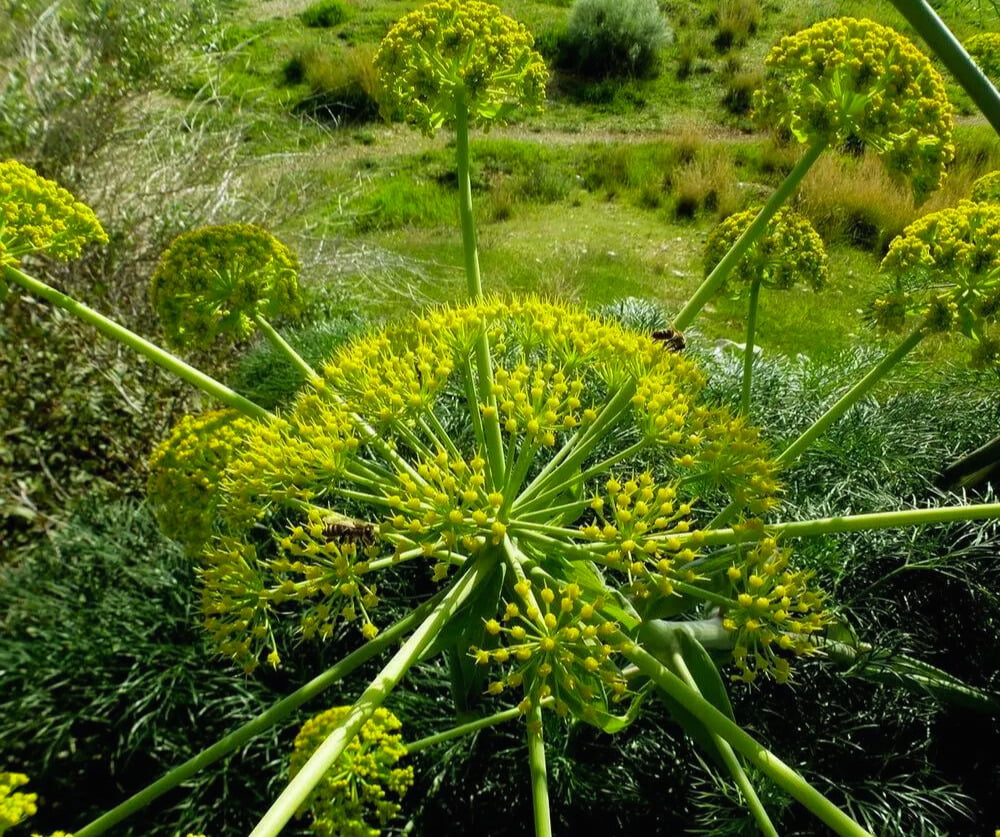
Ferula and Planting: A Comprehensive Guide
Introduction
In the world of gardening and horticulture, few plants are as captivating as the Ferula genus. These tall, stately perennials are known for their ornamental beauty and, in some cases, their culinary uses. In this comprehensive guide, we will delve into the world of Ferula plants, exploring everything from their varieties to the intricacies of planting and caring for them. Whether you’re an experienced gardener or just starting, this article will provide you with valuable insights into the fascinating realm of Ferula.
What are Ferula Plants?
Ferula is a genus of flowering plants in the Apiaceae family, commonly referred to as the carrot family. These plants are native to regions spanning from the Mediterranean to Central Asia. One of the most notable characteristics of Ferula plants is their tall, erect stems and umbrella-like clusters of small, delicate flowers.
The Fascinating World of Ferula Plants
Ferula plants, belonging to the Apiaceae family, are a captivating group of perennials that have captured the attention of gardeners, herbalists, and culinary enthusiasts for generations. As we delve further into their world, we’ll explore their various aspects in greater detail.
Varieties of Ferula
The Ferula genus boasts a wide range of species, each with its unique characteristics and uses. Let’s take a closer look at some notable varieties:
- Ferula communis: Also known as Giant Fennel, this species is famous for its towering height, often reaching over 6 feet. It’s adorned with feathery, finely divided leaves and clusters of yellow flowers. Ferula communis is primarily grown for its ornamental appeal and its place in traditional medicine.
- Ferula asafoetida: Often referred to simply as Asafoetida, this plant is renowned for its strong-smelling resin obtained from its roots. This resin, when dried and ground, is used as a pungent spice in various cuisines, particularly in Indian and Middle Eastern cooking.
- Ferula gummosa: Known for its resin-producing capabilities, Ferula gummosa is native to Iran. The resin extracted from its roots, commonly called “gum ammoniac,” has been used in traditional medicine and perfumery.
Planting and Care Tips
For successful cultivation of Ferula plants, understanding their specific requirements is crucial.
Planting Time and Location: Depending on your climate, the best time to plant Ferula can vary. In temperate regions, spring is ideal, allowing the plants to establish before summer. In milder climates, fall planting is suitable. Choose a sunny spot in your garden with well-draining soil.
Soil Preparation: Prepare the soil by adding organic matter such as compost or aged manure. This enriches the soil and provides essential nutrients for robust growth.
Watering Needs: While Ferula plants don’t require constant watering, you should ensure that the soil stays consistently moist, especially during the first year of growth. Once established, they can tolerate drier conditions.
Maintenance and Pruning: Regular pruning is essential to maintain the health and appearance of Ferula plants. Remove dead or damaged stems, as well as spent flower heads, to encourage new growth. Tall varieties may benefit from staking to prevent toppling.
Culinary and Medicinal Uses
Ferula plants have made significant contributions to both the culinary and medicinal worlds.
Culinary Uses: Ferula asafoetida, in particular, is prized for its culinary applications. Its resin, when used sparingly, imparts a unique umami flavor to dishes. It’s commonly used in curries, stews, and pickles, especially in Indian cuisine.
Medicinal Applications: Ferula plants have a long history of use in traditional medicine. Various parts, including the roots, have been employed to treat ailments such as digestive issues, respiratory problems, and even as a mild sedative. However, it’s essential to use them with caution and consult with a healthcare professional when considering medicinal use.
Cultural Significance
The cultural importance of Ferula plants extends across different regions and traditions.
Myths and Legends: In some cultures, Ferula plants have been associated with legends and myths. They were believed to possess protective qualities and were often used in rituals and ceremonies to ward off evil spirits.
Symbolism: Ferula plants hold diverse symbolism in different cultures. Some view them as symbols of strength and resilience due to their robust growth, while others attach spiritual significance to these towering plants.
In conclusion, Ferula plants offer a wealth of possibilities, from their aesthetic beauty to their culinary and medicinal contributions. Whether you’re a seasoned gardener or a novice, cultivating Ferula can be a rewarding and enriching experience that connects you to a rich tapestry of history, culture, and nature.
FAQs
- Can I grow Ferula plants in containers?
- Yes, you can grow certain varieties of Ferula in containers. Choose a large pot with excellent drainage and ensure the plant receives adequate sunlight.
- Are Ferula plants deer-resistant?
- Ferula plants are relatively deer-resistant, but in times of food scarcity, deer may browse on them.
- How do I store Ferula resin for culinary use?
- Store Ferula resin in an airtight container away from light and moisture. It can last for several years when stored properly.
- What are the environmental benefits of planting Ferula?
- Ferula plants can help improve soil quality and attract beneficial pollinators, contributing to a healthier garden ecosystem.
- Are Ferula plants easy to grow for beginners?
- While some varieties of Ferula are relatively easy to grow, they may require more care and attention than other garden plants. Beginners should start with hardier species and gain experience over time.